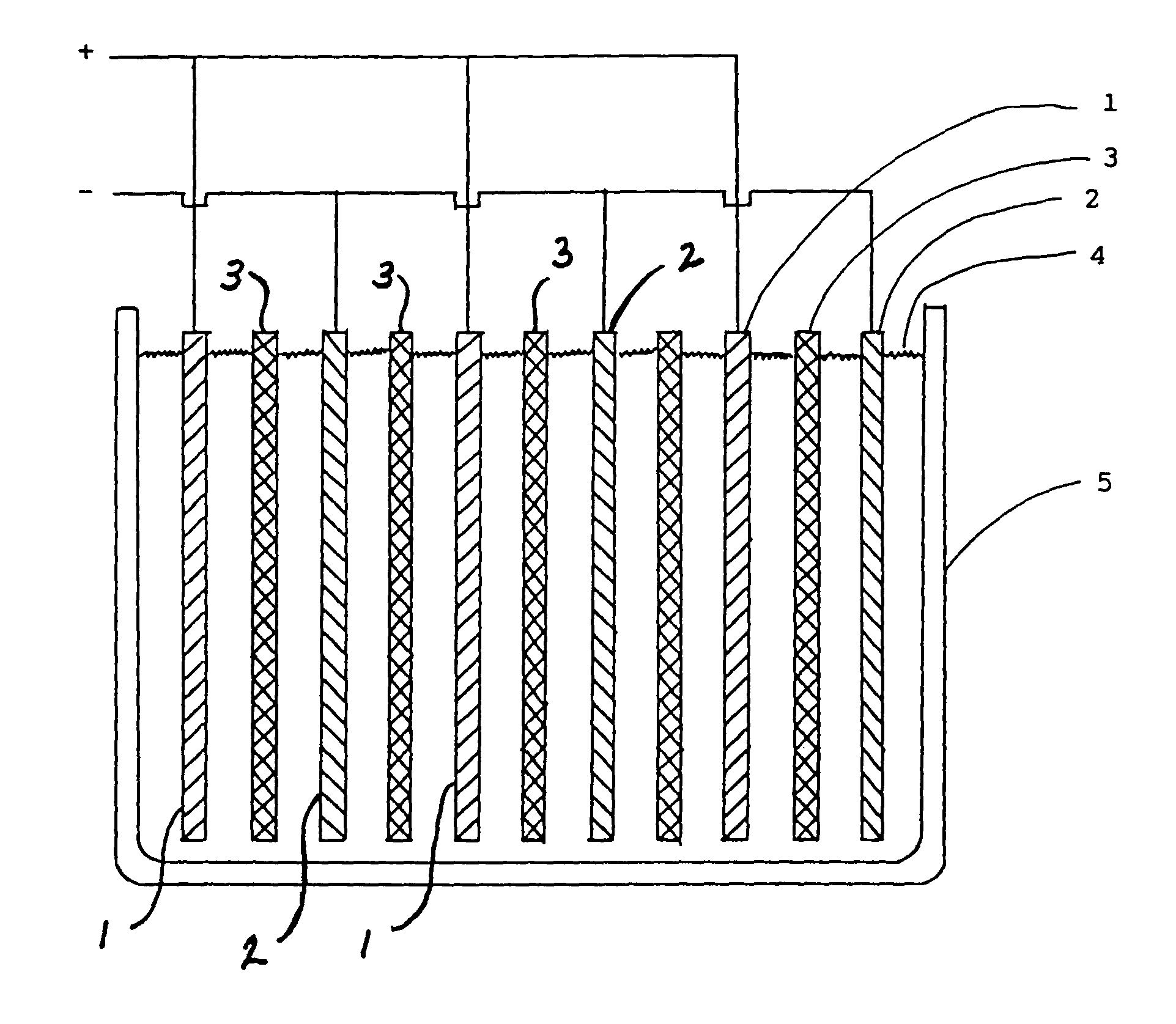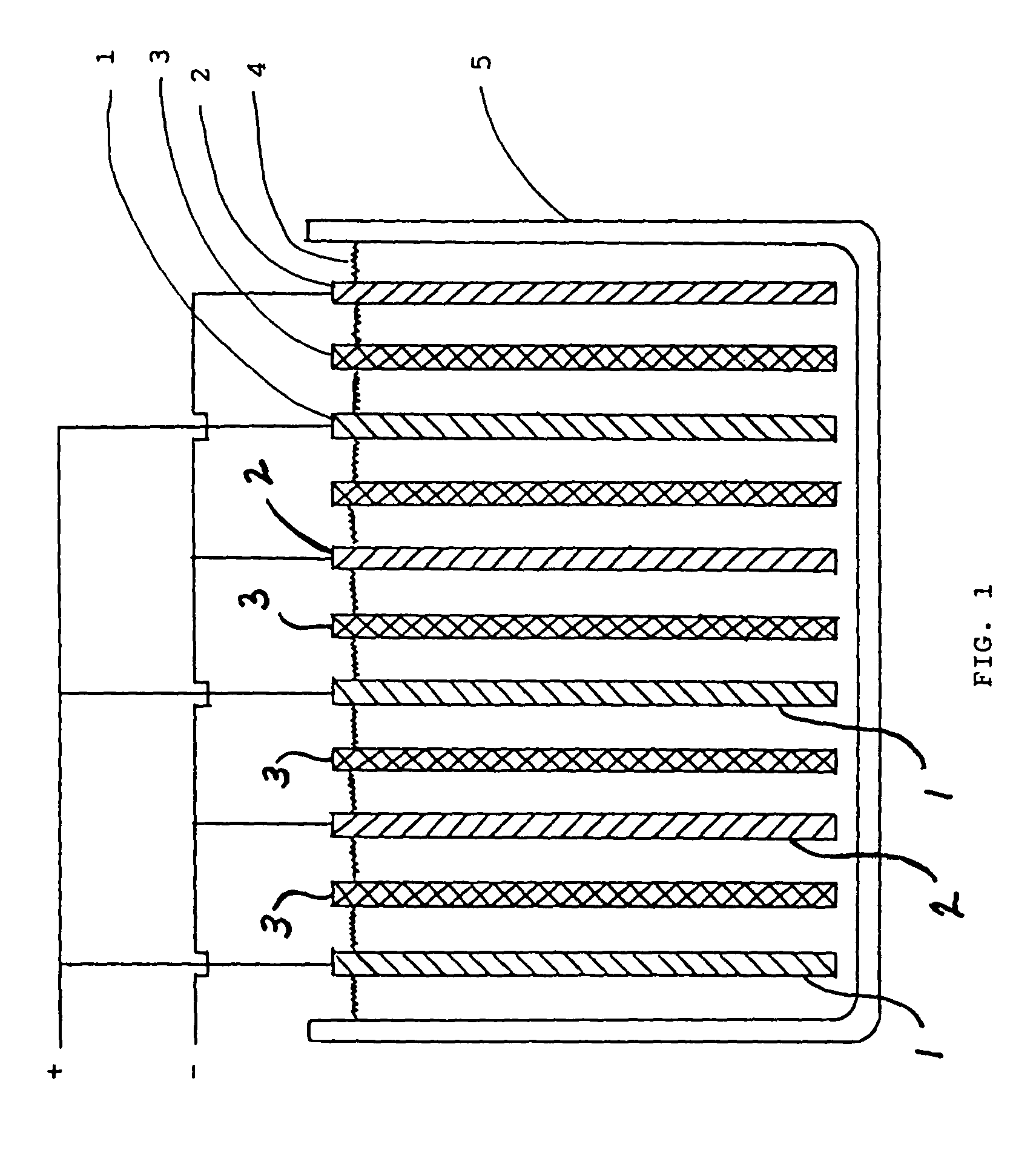Lead-alkaline battery
a lead-alkaline battery, a new type of technology, applied in the direction of primary cells, cell components, electrochemical generators, etc., can solve the problems of limited energy density, limited cycle life, and extremely corrosive electroly
- Summary
- Abstract
- Description
- Claims
- Application Information
AI Technical Summary
Benefits of technology
Problems solved by technology
Method used
Image
Examples
example no.1
Example No. 1
[0024]The electrolyte was prepared by heating 100.0 gm. Of potassium bicarbonate in an oven to convert it to potassium carbonate, which was then dissolved in 185 ml. of water. The positive electrode was formed from a 1½ in. wide strip of lead and the negative electrode was a 1½ in. wide strip of steel. The cell comprised a glass jar about 2¾ in. diameter by 2½ in. high. After charging the cell at 2.5 volts for 21 minutes an open circuit potential of 1.7 volts was observed. At the end of the run both electrodes were in good condition and the electrolyte was water-white.
example no.2
Example No. 2
[0025]The electrolyte was prepared by heating 106.3 gm. of sodium bicarbonate in an oven to convert it to sodium carbonate, which was dissolved in 250 ml. of water and 10 ml. of concentrated sulfuric acid. Two strips of lead 2 in. wide were used for the positive and negative electrodes. The cell comprised a glass jar 2½ in. diameter by 4 in. high. After charging the cell at 2.4 volts for 9 minutes an open circuit potential of 1.5 volts was observed. Both electrodes were dimensionally stable.
example no.3
Example No. 3
[0026]The same cell was used as in Example 2, but 3.7 gm. of sodium hydroxide pellets were added to the electrolyte. Also, a zinc electrode was substituted for the negative lead electrode. After charging the cell at 2.5 volts for 3 minutes an open circuit of 2.1 volts was obtained. The electrodes remained in excellent condition after repeat cycling.
PUM
| Property | Measurement | Unit |
|---|---|---|
| energy density | aaaaa | aaaaa |
| energy densities | aaaaa | aaaaa |
| alkalinity | aaaaa | aaaaa |
Abstract
Description
Claims
Application Information
 Login to View More
Login to View More - R&D
- Intellectual Property
- Life Sciences
- Materials
- Tech Scout
- Unparalleled Data Quality
- Higher Quality Content
- 60% Fewer Hallucinations
Browse by: Latest US Patents, China's latest patents, Technical Efficacy Thesaurus, Application Domain, Technology Topic, Popular Technical Reports.
© 2025 PatSnap. All rights reserved.Legal|Privacy policy|Modern Slavery Act Transparency Statement|Sitemap|About US| Contact US: help@patsnap.com



